|
The simple rule of the start and end of a sample on zero-level is here a bit more complicated. It must also have the properties of a real zero-Crossing. At least if you want to have a continuous sound-pattern, which sounds as smooth as possible. ( The screenshot-examples do have different zoom-resolutions, but that's not relevant here ) |
|
Head or tail
- Trick 1 Looping is a repeat, so the end of the sample will be coupled to the beginning of the next time. Besides the zero-level there is also a need for attention to the phase-polarity. Example beginning and end of a sample with the right zero-values : |
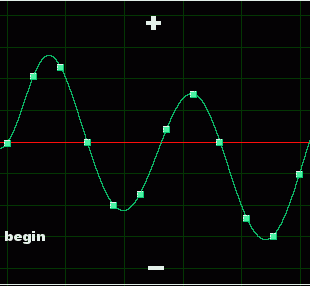
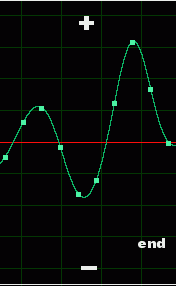
|
| Here end and begin of a waveform with a positive phase, which delivers this coupling : |
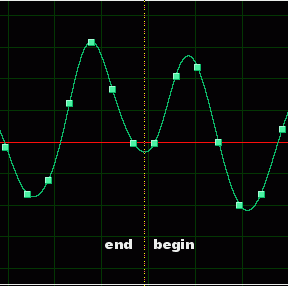
|
|
Normally a waveform continuously changes from positive to negative, so two positive phases coupled is not 'smooth'. A solution is, to make sure that on one side there is a positive phase and on the other side a negative phase. In this case 3 samples are erased from the beginning, so the sample starts with a negative phase : |
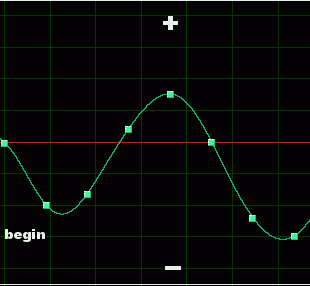

|
| Which leads to this coupling of end plus beginning : |
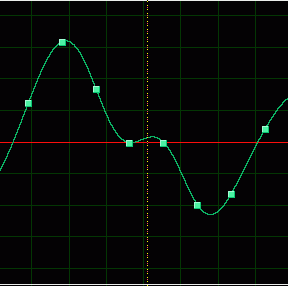
|
|
It looks already a bit smoother, but, just as with the first example, there is a 'crack' in it. Caused by reading the last sample and the the first one, which gives twice a zero-value. So to make a real Zero-Crossing 1 of the 2 can be deleted. In this example it happened to the last one, which give a nice smooth transition : |
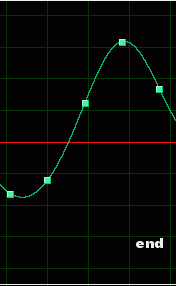
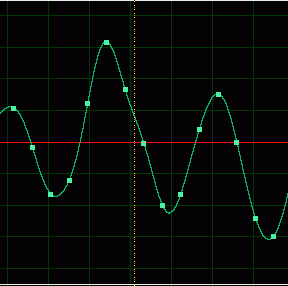
|
|
The absence of 3 samples is, on the level of 44 kHz 16 bits stereo an 'unaudible' difference. Duration : 44100 x 2 = 88200 : this inverted x 3 = 33 micro-seconds. Disadvantage of this : 1 of the 2 sides doesn't have a zero-level any more, so it can cause a tick at the start or end of the total playback of the series of loops. |
|
Inversion
- Trick 2 Inversion of a wavfile means to change the polarities of the phases. Meaning a difference of 180°. As so, it doesn't have any influence on the sound-experience. Suppose, start- and end-phase do have the same polarity : |
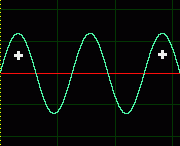
|
| A looping of 4 times wil look like this : |

|
|
Sharp transitions always make higher harmonics with as worst case a 'tick'. So the sample and the inverted sample look like this : |

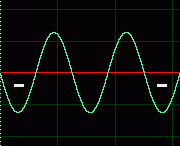
|
|
Now, if a new sample is been made from the original plus the inverted one, then the new wavfile is of course twice as long, but it produces a much smoother looping : |

|
|
Reversion
- Trick 3 If it appears, that, despite the above, the looping is making a distinctive 'jump', caused by changing tone-characteristics during the sample, e.g. a strings-sound with phasing, then the adding of the same sample backwards, after the end, can give some relief, because then at least the sound changes more smoothly in a flow, instead of having that jump in tone-color. Of course with regarding the polarity preferences described above. |